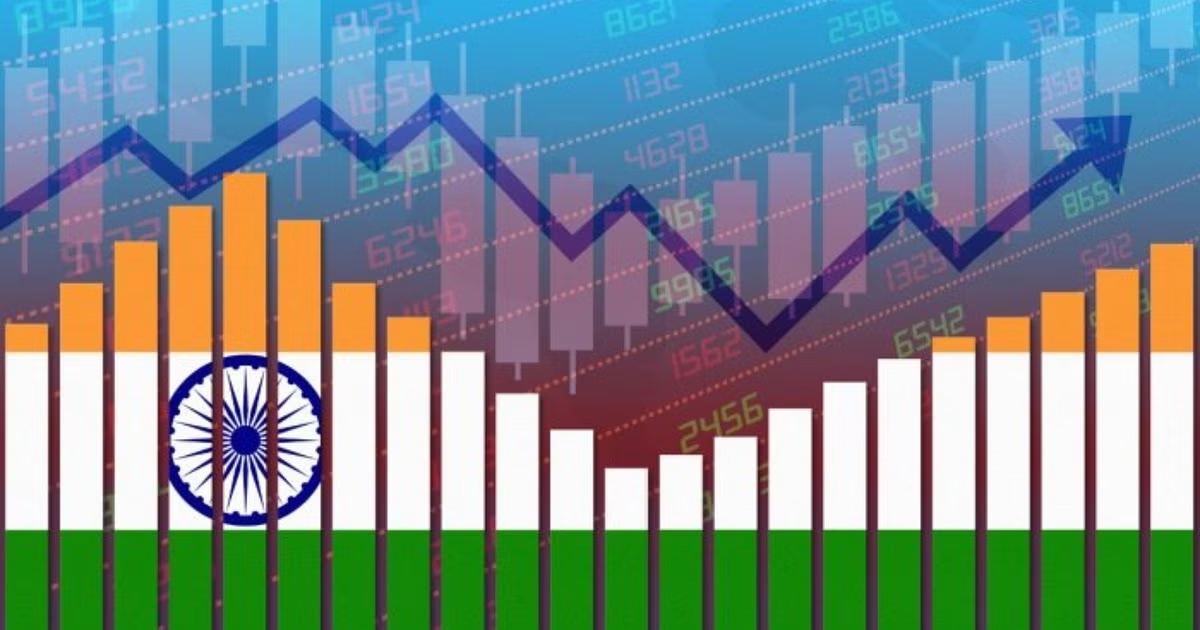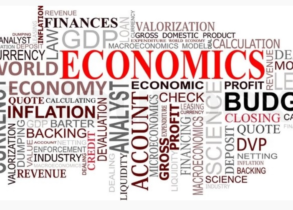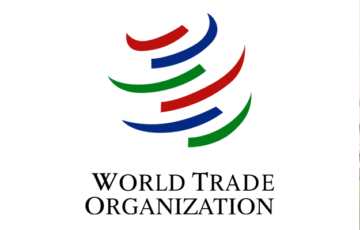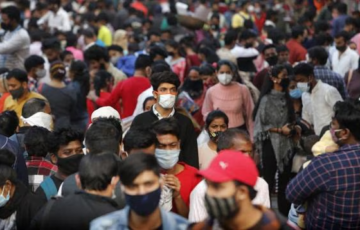SALIENT FEATURES OF THE INDIAN ECONOMY
Salient Features of Indian Economy
Strengths of Indian Economy
Mixed Nature of Economy
- India’s economy is a blend of socialism and capitalism, integrating the efficiency and innovation of the private sector with the social welfare objectives of the public sector. This system has evolved significantly since the economic liberalization of the 1990s, which reduced government controls over the private sector, attracting foreign investments, and encouraging free-market principles. The synergy between private enterprise and public governance aims to foster economic growth while ensuring equitable access to resources and opportunities.
Pre-dominance of Agriculture
- Agriculture is a cornerstone of the Indian economy, supporting a majority of the rural population. It’s not just the source of food security but also a significant contributor to India’s GDP. However, the sector faces challenges such as limited technological advancement, reliance on monsoon rains, and small landholdings that hinder productivity. Addressing these issues while capitalizing on the sector’s potential is crucial for sustainable development.
Emerging Economy
- India’s status as an emerging economy is underscored by its rapid growth rates, increasing influence in global trade, and an expanding role in international affairs. Its large market, democratic governance, and strategic location make it an attractive destination for foreign direct investment (FDI). The challenge lies in maintaining this growth momentum while ensuring it translates into broad-based improvements in living standards.
Demographic Dividend
- India’s demographic profile, with a large proportion of young people, presents a potential economic boon. This demographic dividend can drive growth if the workforce is well-educated, skilled, and employed in productive sectors. The challenge is to create enough quality jobs and enhance skill development to fully leverage this advantage.
Rapid Urban Growth
- Urbanization in India is propelled by migration from rural areas seeking better employment and living conditions. Cities are hubs of economic activity, innovation, and entrepreneurship. However, rapid urban growth also strains infrastructure, housing, and public services. Balancing urban development with sustainable resource management is key.
Fast Growing Service Sector
The service sector’s dynamism has positioned India as a global leader in areas like IT, telecommunications, and financial services. This sector’s growth has been instrumental in driving economic expansion and job creation. The challenge is to ensure that this growth is inclusive and benefits other sectors of the economy as well.
- Tourism contributes to economic diversification, foreign exchange earnings, and job creation, showcasing India’s rich cultural heritage and natural beauty.
- IT Industry is a global powerhouse, providing software and services worldwide, highlighting the need for continuous skill development and innovation.
- Space Sector demonstrates India’s technological capabilities and ambitions, with implications for national security, global positioning, and scientific advancement.
- Port Services are critical for trade and economic integration, requiring investments in infrastructure and efficiency improvements.
Weaknesses of Indian Economy
Low per Capita Income
- Despite macroeconomic growth, per capita income levels in India lag behind developed countries, reflecting disparities in wealth distribution and the need for inclusive growth strategies that benefit all sections of society.
Large Population Base
- India’s population size presents both opportunities and challenges. While it offers a vast labor market and consumer base, it also imposes pressures on resources, infrastructure, and job creation. Effective population management and policy planning are essential.
Inequality and Poverty
- Economic disparities and poverty remain pervasive, with wealth concentrated among a small segment of the population. This inequality undermines social cohesion and economic stability. Policies aimed at redistributing wealth, improving access to education, and healthcare are vital.
Obsolete Technology
- The gap in technology adoption affects productivity and competitiveness. Investing in R&D, facilitating technology transfer, and enhancing workforce skills are necessary steps to modernize industries and agriculture.
Inadequate Employment Generation
- The challenge of creating enough jobs, especially for the youth, is acute. Fostering entrepreneurship, investing in emerging sectors, and improving labor market flexibility can help address this issue.
Low Rate of Capital Formation
- Accelerating capital formation is crucial for sustained economic growth. Enhancing savings rates, attracting FDI, and improving investment climates are strategies to increase capital availability.
Lack of Basic Infrastructural Facilities
- Developing robust infrastructure is fundamental for economic efficiency and quality of life. Investments in transportation, energy, digital connectivity, and urban planning are urgently needed to support India’s growth aspirations.
Indian Economy During British Times
Pre-British Era
- Before the advent of British administration, India’s economy was predominantly self-sufficient, celebrated for its flourishing handicraft industry. This period laid the groundwork for the modern Indian economy. Notably, the Indian handicraft sector earned international acclaim for its exquisite products, including high-quality cotton and silk fabrics, precious stones, spices, metals, sugar, and more. A prominent example is Muslin, a fine cotton fabric originally from Bengal, particularly around Dhaka, known for its superior quality, which was highly sought after globally.
Colonial Economic Policies
- With the onset of British rule, India transitioned from an autonomous economy to a subordinate role, serving as a primary supplier of raw materials for Britain’s burgeoning industrial needs. This era marked a significant shift, as economic policies were explicitly designed to safeguard and advance British economic interests. The colonial administration showed little concern for assessing India’s national income or fostering economic development beyond what would benefit Britain. Indian economists like Dadabhai Naoroji, V.K.R.V. Rao, and R.C. Desai critically analyzed and documented the economic depredations of this period, highlighting the substantial economic drain from India to Britain.
Agriculture Sector
- The agricultural sector, which employed the majority (about 80%) of India’s populace, was significantly impacted by British economic policies. Despite the large workforce engaged in agriculture, the sector experienced stagnation and diminished productivity, largely due to oppressive land revenue systems like the Zamindari system. This system, particularly prevalent in Bengal and parts of eastern India, diverted agricultural profits from cultivators to zamindars (landlords), who showed little interest in enhancing agricultural productivity or conditions.
Several factors contributed to the deterioration of the agricultural landscape during British rule:
- Land Revenue Systems: The introduction of systems like the Zamindari led to exploitation by landlords, with little investment in improving agricultural practices or land.
- Small and Fragmented Land Holdings: This made cultivation inefficient and challenging, coupled with low output per hectare.
- Dependence on Rainfall: Agriculture heavily relied on monsoon rains, with inadequate rainfall severely affecting output.
- Commercialization of Agriculture: The push for cash crops, along with insufficient irrigation and minimal use of fertilizers, exacerbated the challenges faced by farmers.
- Partition Impact: The partition of India had a profound negative effect on agricultural production, particularly in the case of highly fertile lands and major crop productions like jute, which suffered due to the division of production areas between India and newly formed Pakistan (and later Bangladesh).
Industrial Sector
Decline of the Handicraft Industry
- The Indian handicraft industry, despite its global reputation and demand, especially in textiles, failed to evolve into a robust industrial base during the colonial period. British policies aimed at de-industrializing India led to the significant decline of this sector, with no alternative industries emerging to fill the void. The colonial government’s de-industrialization strategy had two main objectives:
- To exploit India as a source of cheap raw materials for British industries and to create a market for British goods sold at higher prices.
- To use India as a dumping ground for British finished products, thus facilitating the expansion of British industries at the expense of the local economy.
- This approach resulted in massive unemployment and increased dependency on imported goods, notably low-cost manufactured products from the UK, further undermining the Indian economy.
Minimal Industrial Development
- The establishment of a few cotton and jute mills by Indian entrepreneurs in Maharashtra and Gujarat did little to counterbalance the decline of traditional handicrafts. These industries were too few and too limited in scope to catalyze widespread industrialization or significantly contribute to the GDP.
- The colonial government did invest in infrastructure developments such as railways, power generation, communications, ports, and the postal system, primarily for their benefit. However, these developments later provided a foundation for India’s public sector growth post-independence.
- Policy Against Competitive Industries
- A fundamental policy of British rule was to prevent the development of any Indian industry that could compete with British industries. The overarching goal was to keep Indian industry subservient, particularly in the realm of capital goods.
Foreign Trade
- The British imposition of restrictive policies, trade, and tariff duties on exports severely impacted India’s foreign trade. Historically a net exporter of various commodities, India’s trade dynamics shifted under British rule, becoming a net importer of finished goods.
- Britain exerted tight control over India’s exports, limiting trade primarily to itself and a few other regions. The export surplus generated by India was used not for economic development but to cover Britain’s administrative expenses and wars, leading to a significant drain of wealth from India.
Demographic Conditions
The colonial era also saw profound changes in India’s demographic landscape:
- The first census in 1881 laid the groundwork for understanding population growth, which showed an overall literacy level below 16%, a figure that significantly improved by 2011.
- India experienced severe famines, high birth and mortality rates, and a lack of public health infrastructure, contributing to widespread disease and high infant mortality rates.
- Poverty was rampant, highlighting the dire conditions faced by the Indian population under British rule.
Occupational Structure
- The occupational structure in colonial India exhibited minimal variation over time, with a significant majority of the population engaged in agriculture. Approximately 70-75% of the workforce was involved in agricultural activities, highlighting the agrarian nature of the Indian economy. The manufacturing and services sectors were relatively underdeveloped, comprising only about 10-15% of the workforce each. Regions such as Orissa, Rajasthan, and Punjab even witnessed an increase in the agricultural workforce, further emphasizing the sector’s dominance.
Infrastructural Development
Railways, Telegraphs, and Posts
- The British colonial administration invested in basic infrastructure, including railways, telegraphs, and postal services. However, the primary motivation behind these developments was not to serve the Indian populace but to further colonial interests. These infrastructural advancements were strategically implemented to facilitate military mobilization, enhance administrative control, and expedite the extraction and export of raw materials to England and other destinations.
Road Construction
- Roads were constructed with the aim of improving military mobility and ensuring the efficient transportation of raw materials to ports and railway stations for export. The development of infrastructure served the colonial economic agenda rather than addressing the needs of the Indian people.
Railways’ Impact
- Introduced in 1854, the railways were a significant British contribution to India, connecting distant regions and breaking cultural and geographical barriers. While railways enabled long-distance travel and had a profound social impact, their introduction primarily benefited the colonial economy. The commercialization of agriculture, facilitated by improved transportation, undermined the self-sufficiency of Indian villages.
Inadequate Inland and Sea Trade Routes
- The development of inland waterways and sea routes was neglected, with existing projects incurring substantial costs to the government exchequer. This lack of investment further constrained India’s economic development and integration into the global trade system.
Legacy of Colonial Rule
- At the time of independence, the effects of British colonialism on India’s economic landscape were evident. The agricultural sector was characterized by overemployment and low productivity, while the industrial sector lacked modernization, diversification, and substantial investment. The infrastructural developments made during the colonial period, although significant, were primarily geared towards fulfilling British economic and strategic interests rather than promoting inclusive growth or development in India.
Indian Economy Posts Reforms of 1991
- India’s economic structure has traditionally been characterized by a mixed economy, integrating features of both a market economy and a planned economy system. This approach aimed to combine the efficiency of market mechanisms with the social objectives of a planned economy.
The Crisis of 1991
- In 1991, India encountered a severe economic crisis primarily triggered by a substantial increase in external debt. This alarming rise in foreign borrowings led to a situation where the Indian government found itself unable to repay its international loans. As a consequence, the Reserve Bank of India (RBI)’s foreign exchange reserves plummeted to levels insufficient to support the country’s trade balance or to finance the importation of fuel and other essential commodities. This critical shortage of foreign exchange reserves resulted in escalated prices of vital goods and compelled the Indian government to initiate new policy regulations aimed at transforming its development strategies.
Pre-1990 Reforms Period
| Gains | · Economic Growth: In the first three decades following the implementation of planned economic policies, India experienced a gradual acceleration in its growth rate, averaging between 3.5 to 4 percent.
· Agricultural Sector Development: Owing to India’s agrarian society and the execution of multifunctional projects such as dam constructions and the Green Revolution, the agricultural sector witnessed significant growth, with rates hovering around 23 to 25 percent. These projects were instrumental in boosting agricultural productivity and, by extension, the overall economy. · Heavy Capital Goods and Infrastructure: There was notable progress in the development of the heavy capital goods sector, alongside significant investments in irrigation projects, thermal power production, and enhancements to public transportation systems. These advancements were critical in laying the groundwork for India’s industrial and agricultural expansion. |
| Failures | · Employment Opportunities: Despite these gains, the period was marked by limited employment generation, with the country grappling with issues of underemployment and unemployment. This lack of adequate job creation posed a significant challenge to the nation’s economic and social fabric.
· Poverty Levels: A staggering portion of the population, exceeding 75 percent, lived below the poverty line. Decades of planned economic policies failed to eradicate poverty or foster inclusive growth, highlighting the limitations of these strategies. · Agricultural Productivity and Land Reforms: Despite investments in agriculture, productivity within the sector remained disappointingly low. Additionally, land reforms aimed at redistributing land to enhance equity and productivity largely failed, further exacerbating the challenges faced by the agricultural sector. · Industrial Competitiveness: The industrial sector suffered from a weak foundation, lacking competitiveness on a global scale. The inability to foster a robust capital goods industry was a significant drawback, undermining India’s aspirations for industrial advancement and economic self-reliance.
|
Economic Crisis of the 1980s
The economic crisis of the 1980s in India was a pivotal period marked by several financial challenges that pushed the country towards comprehensive economic reforms. This crisis was characterized by a confluence of internal fiscal mismanagement and external economic pressures, leading to a precarious financial situation that necessitated significant policy shifts.
Key Factors Contributing to the Crisis
- Government Expenditure Exceeding Revenue: The government’s spending surpassed its revenue, leading to a deficit financed through borrowing from banks. This increased the fiscal deficit, elevating the country’s debt burden.
- Domestic and Foreign Loans: To bridge the fiscal gap, India secured loans from both domestic and international financial institutions, escalating the national debt and exposing the economy to external vulnerabilities.
- Inflation in Essential Commodities: Prices of vital commodities soared, impacting the general populace and contributing to economic instability.
- Imbalance in Trade: The period saw a sharp increase in imports without a corresponding rise in exports, exacerbating the balance of payments issue and depleting foreign exchange reserves.
- Decline in Foreign Exchange Reserves: The reserves dropped to levels insufficient for financing essential imports, including gasoline and luxury products, further straining the economy.
- Inability to Repay International Lenders: India faced challenges in accumulating enough foreign exchange to meet interest payments and principal repayments to international creditors.
- Lack of Developmental Spending: Despite the financial crunch, the government’s expenditure did not significantly boost development activities, limiting economic growth.
Mitigation Measures and Reforms
In response to the crisis, India approached the International Bank for Reconstruction and Development (IBRD), commonly known as the World Bank, securing a $7 billion loan to manage the situation. This financial assistance came with stipulations for economic policy adjustments aimed at stabilizing and revitalizing the economy:
- Introduction of New Economic Policy: Aimed at creating a more competitive economic environment, reducing barriers to entry and exit for firms, and enhancing overall efficiency.
- Foreign Exchange and Fiscal Measures: Emphasis on maintaining adequate foreign exchange reserves, controlling inflation, reducing import tariffs, increasing excise duties, and cutting government expenditure by 10 percent to manage fiscal deficits.
Reasons for Economic Reforms
- Inflation: The inflation rate surged from 6.7% to 16.7%, primarily due to an increase in the money supply.
- Fiscal Deficit and Public Debt: Non-development expenditure grew, leading to a rise in the fiscal deficit and public debt.
- Adverse Balance of Payments (BOP): The BOP suffered due to an increase in imports, notably influenced by global events like the Iran-Kuwait war in 1991, which also led to a spike in petrol prices.
- Underperforming Public Sector Units (PSUs): PSUs became increasingly inefficient, draining government resources without corresponding returns on the increased government investment.
- Depleted Foreign Exchange Reserves: The foreign exchange reserves fell to their lowest level, incapable of covering the costs of essential imports.
Liberalization-Privatization-Globalization (LPG) Framework
| Liberalization | · Greater freedom for private sector industries and businesses to trade, along with a reduction in government control.
· Decrease in regulations and restrictions across various sectors. · Removal of Industrial Licensing and Registration. · Reduction of import restrictions and duties. · Decrease in personal and corporate taxes. · Liberalized rules for Foreign Direct Investments (FDIs) and Foreign Portfolio Investments (FPIs). · Opening up of public sector areas to private players (e.g., power, energy, telecom, transport). |
| Privatization | · Transfer of ownership of state-owned assets to the private sector (sale of 51% and above shares).
· Withdrawal of government from management of public companies. · Deregulation and introduction of market reforms. · Disinvestment and ownership transfer to the private sector. · Sale of assets for financial system improvement and modernization. · Incorporation of private capital and managerial capabilities to enhance PSUs performance. · Attraction of Foreign Direct Investment (FDI). · Autonomy to Public Sector Units (PSUs) in managerial decisions. |
| Globalization | · Enhanced economic integration and interdependence among nations.
· Unrestricted movement of goods, services, capital, and labor across borders. · Opening of domestic markets to foreign products by reducing customs duties. · Abolition of import licensing and elimination of tariff barriers. · Expansion in Foreign Institutional Investors (FIIs), FDIs, and Foreign Exchange Reserves. · Permitting foreign finance infusion through stock. · Signing of international agreements like TRIPS and TRIMs with the WTO. |
Effects of Globalization on the Economy
| Effects of Globalization | Positive Effects | Negative Effects |
| Economic Impact | · Increase in India’s share in foreign trade.
· Increase in foreign investment through FDI and FII. · Growth in foreign currency reserves (to more than 600 billion US dollars by 2022). |
· Loss to domestic industries due to increased competition.
· Pressure on domestic industries from international companies. |
| Technological Impact | · Technological advancement from the influx of foreign firms, bringing superior technology (e.g., Maruti Suzuki, Hero Honda). | |
| Employment and Labor | · Improvement in employment opportunities through foreign companies and sectors like MNCs, BPOs.
· Reduction in the percentage of brain drain. |
· Exploitation of labour, particularly in labour-intensive technologies.
· Exploitation of the unorganized labour sector through long working hours. |
| Societal and Cultural | · Improvement of product quality, value, and marketing contributing to brand development. | · Adverse effects on culture and value systems. |
| Overall Observation | · Globalization, facilitated by Liberalization and Privatization policies, presents a mixed bag of outcomes, with both positive and negative effects. It’s crucial to measure growth by comparing past and present states. | · While offering unlimited opportunities, high technology, and a platform for developing countries to become key players, it also poses challenges to domestic industries and labor. |
UPSC QUESTION PAPERS
1. With reference to the Indian economy after the 1991 economic liberalization, consider the following statements: (2020)
1. Worker productivity (per worker at 2004 -05 prices) increased in urban areas while it decreased in rural areas.
2. The % age share of rural areas in the workforce steadily increased.
3. In rural areas, the growth in non -the farm economy increased.
4. The growth rate in rural employment decreased.
Which of the statements given above is/are correct?
(a) 1 and 2 only
(b) 3 and 4 only
(c) 3 only
(d) 1, 2 and 4 only
2. Which of the following has/have occurred in India after its liberalization of economic policies in 1991? (2017)
1. The share of agriculture in GDP increased enormously.
2. Share of India’s exports in world trade increased.
3. FDI inflows increased.
4. India’s foreign exchange reserves increased enormously.
Select the correct answer using the codes given below:
(a) 1 and 4 only
(b) 2, 3 and 4 only
(c) 2 and 3 only
(d) 1, 2, 3 and 4










